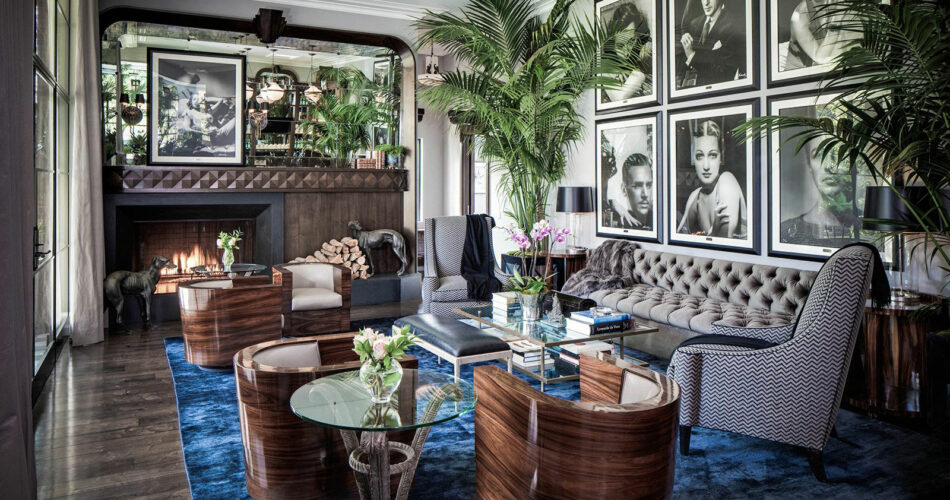Imagine stepping into a space where the whisper of a bygone era collides with the rhythm of the present. This is where art nouveau interior design gently unfurls its tendrils, offering a dance between history and modernity.
Here, each curve, each motif echoes the organic, pulsating with a life that refuses to be confined by straight lines and rigid forms.
In the heart of such a room, where glass paints the light and ironwork climbs like ivy, one discovers an elegance once cradled by the turn of the century.
As a devoted steward of interiors, my role is to guide your journey through the art nouveau landscape, breathing new life into spaces while honoring the narrative of their origins.
By journey’s end, you’ll have unraveled the secrets of incorporating the timeless allure of art nouveau into the contemporary canvas of your home.
Expect to delve into the souls of influential figures like Antoni Gaudí and Louis Comfort Tiffany and to weave stylized natural forms into the very fabric of your living spaces, all while maintaining that delicate equilibrium between ornamental beauty and everyday functionality.
What Is Art Nouveau Interior Design?
Art Nouveau interior design is an ornate style from the late 19th century known for its flowing lines, nature-inspired motifs, and use of materials like glass and iron to create harmonious, organically-influenced spaces.
Key Characteristics of Art Nouveau Design
Architectural Elements
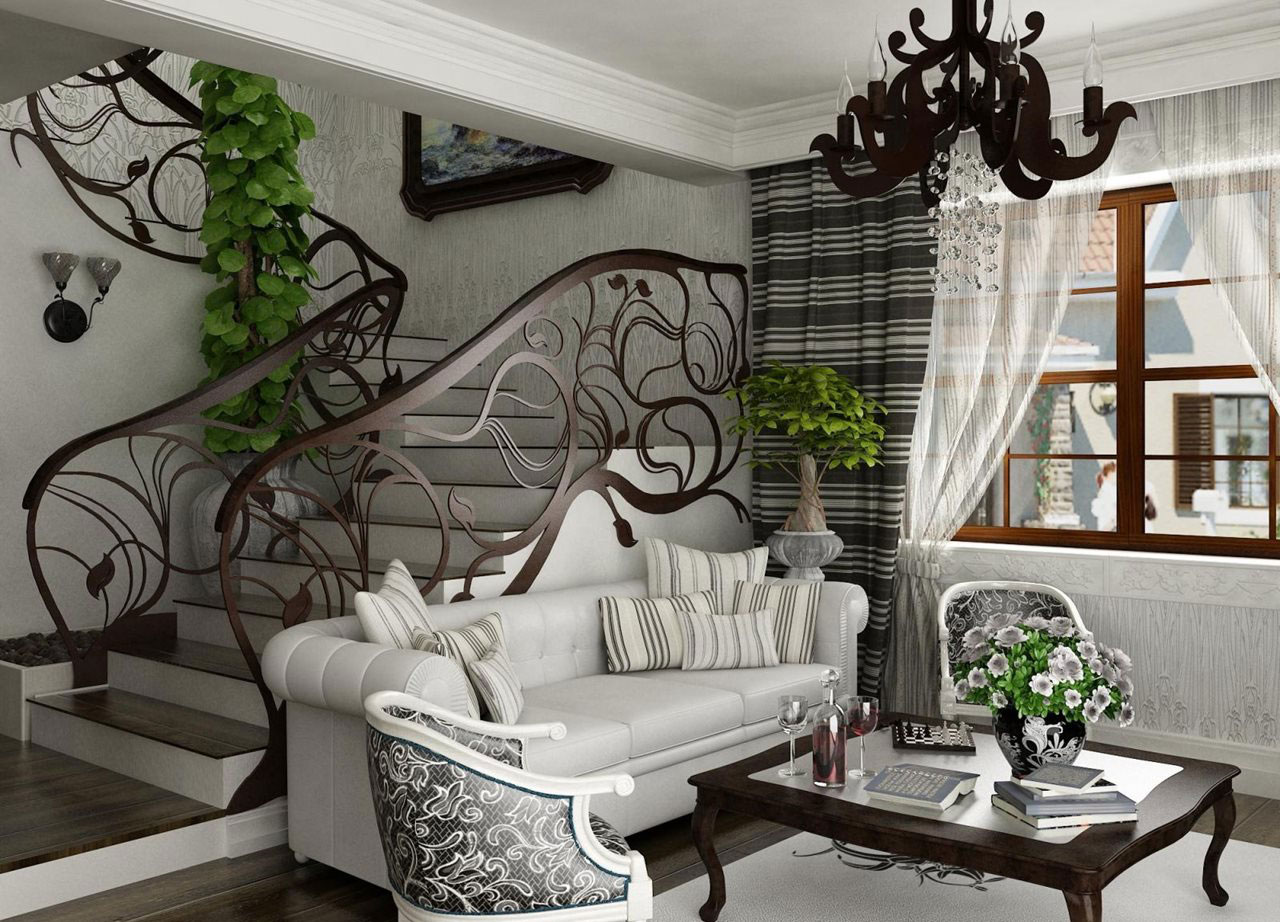
The whisper of asymmetry breathes life into my every layout. In the realm of art nouveau interior design, walls dare to curve, and doors arch like the backs of dancers.
These forms buck tradition, eschewing the straight-laced for a freer, organic silhouette, echoing the irregularity found in nature’s own blueprint.
Room layouts unfurl with natural grace, indoors mirroring the great outdoors.
Ironwork spirals up and around window frames, while delicate mosaics create a tapestry of light and color. The motto here is clear: step away from the mundane, lean into the fantastical.
Decorative Motifs
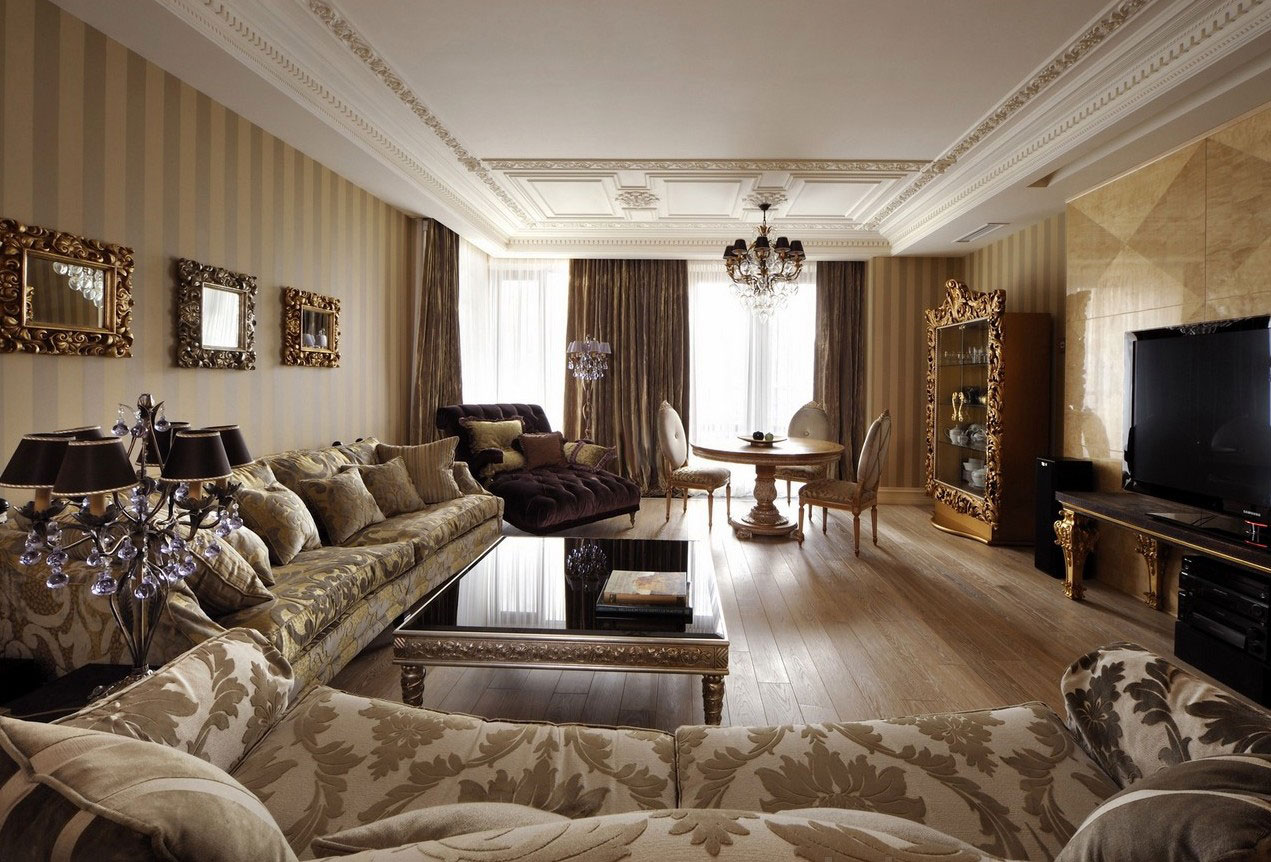
Envision the sinuous lines of a vine, the sweet symmetry of flower petals — these nature-inspired motifs are the heartbeat of the style.
They are enlivened through linear contours, a dance of curling leaves and whispering breezes captured in the steady hand of the artisan.
Organic motifs merge seamlessly with geometric patterns, often pioneered by geniuses like Alphonse Mucha, whose work still breathes life into the walls on which it dwells.
We strike a delicate balance here, where each stroke of the brush tells the story of both fantasy and precision.
Materials Commonly Used
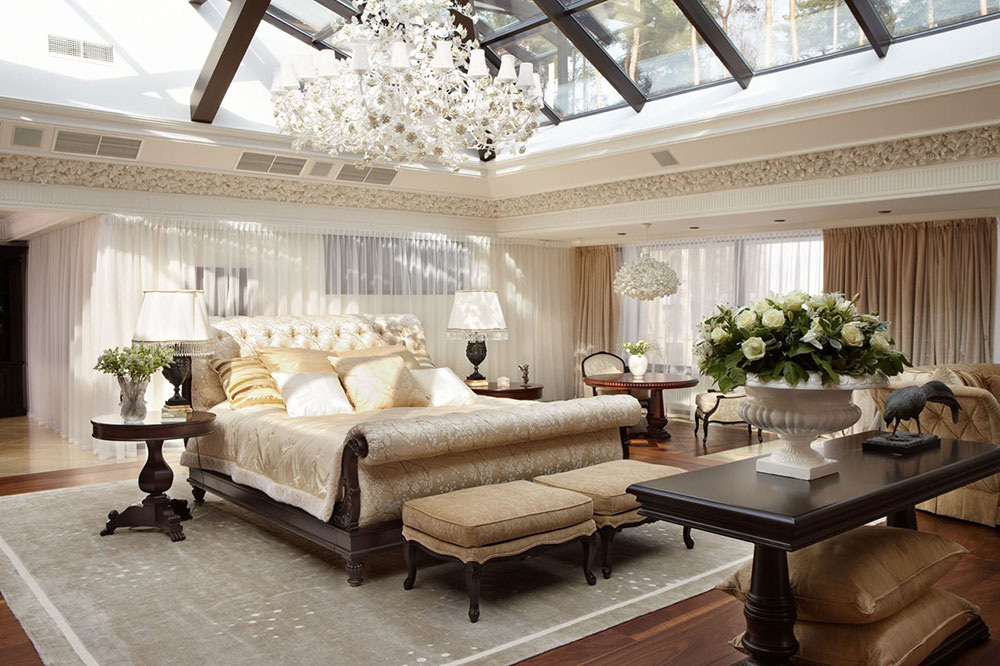
Tap into the materials that whisper of both Earth and hearth: the transparency of glass, the sturdy romance of wrought iron, and the warmth of hardwood.
Each is chosen not simply for its utility but for its voice. The role of craftsmanship is never underestimated, for it brings forth the richness, the soulful touch to each piece, and the emphasis on artistry turns the mundane into the sublime.
Influential Figures in Art Nouveau Design
Designers and Architects
Victor Horta and Antoni Gaudí, visionaries painted with the broad strokes of genius, each corner of space they touched was transformed. Horta innovated spaces that breathed whilst Gaudí crafted structures that seemed conjured from dreams, his architectural masterpieces a symphony of stone and color, each a study in the marriage of form and function.
Artists and Artisans
Alphonse Mucha reigns supreme in the graphic arts, echoing the time’s fascination with the new and the beautiful.
Louis Comfort Tiffany, meanwhile, revolutionized glass art, turning every pane and lampshade into a segment of a kaleidoscope that cast vibrant hues into the lives it touched.
Analyzing Art Nouveau Interior Design Elements
Furniture

Furniture isn’t a mere utility; it’s poetry in wood, metal, and fabric.
Here, characteristics of Art Nouveau furniture include curves that mimic stems and blooms, and elegance is not sacrificed at the altar of functionality.
Ornamentation nestles against the necessity, where the form is given the same weight as the function.
Lighting
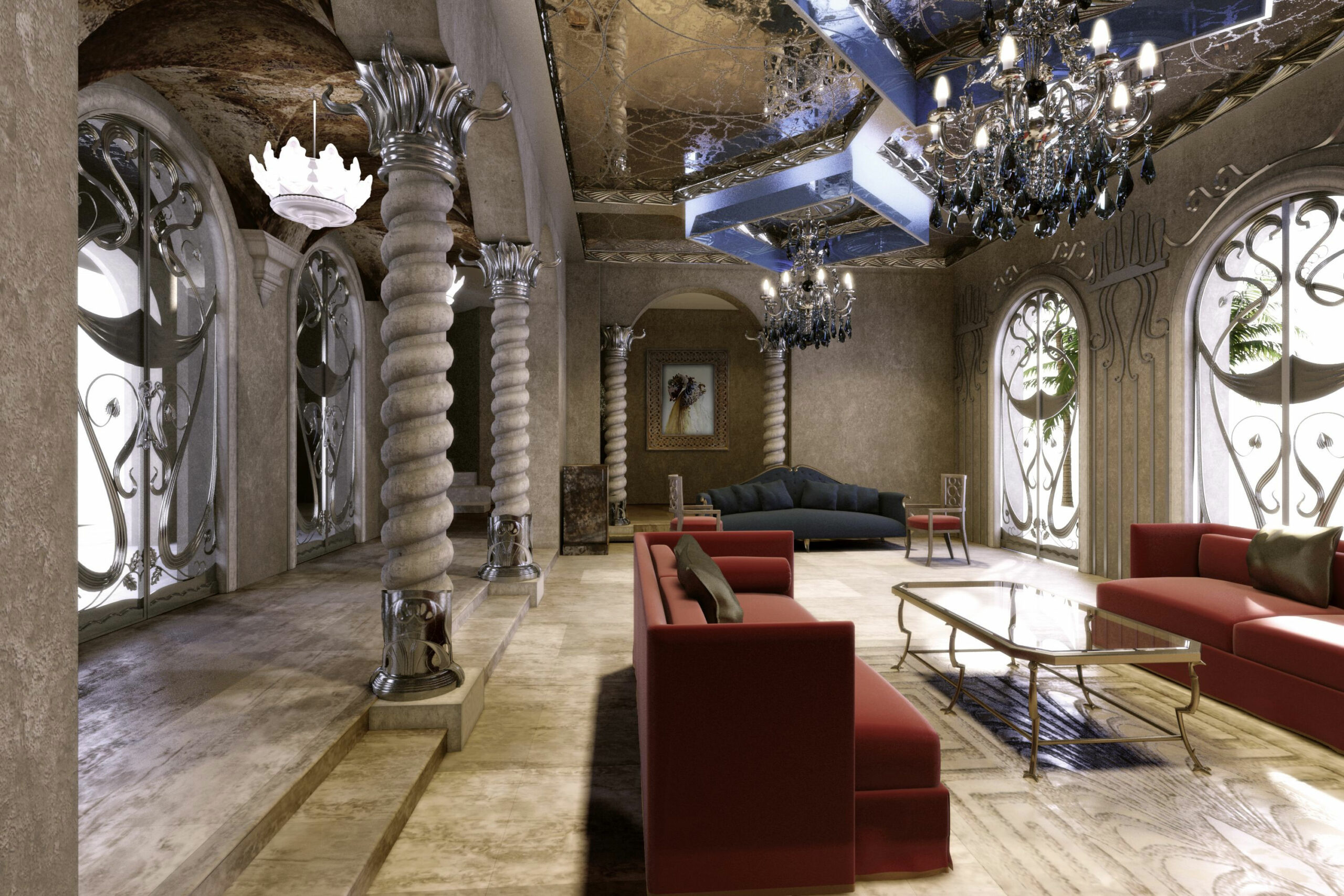
Illumination is key, and in Art Nouveau, every lamp is a moon casting dulcet beams over the waters of the room.
The intricate designs of these decorative lamps fulfill a purpose greater than visibility: they are the conductors of ambiance.
Natural and artificial lighting work in tandem, cradling the space between their luminescent palms.
Textiles and Wall Coverings
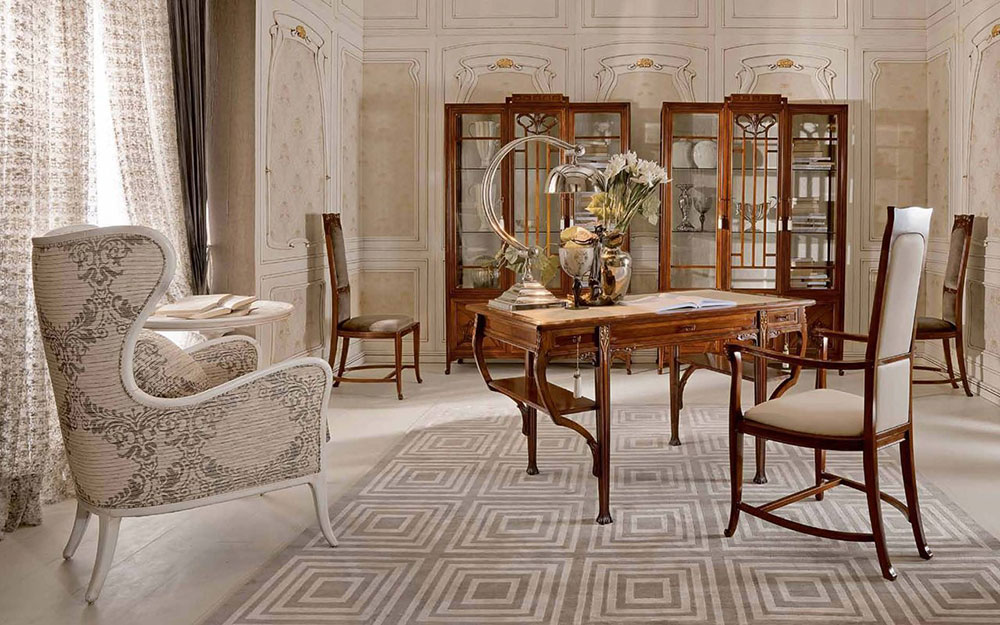
Textiles are not just coverings; they are the robes of royalty that rooms wear with pride.
The distinctive patterns summon landscapes in swathes of vibrant colors, drawing the eye and heart into a love affair with space.
Wallpapers ensnare the senses, from the floral wallpaper designs to the very fibers of the fabric.
Implementing Art Nouveau in Modern Interiors
Integration with Contemporary Styles

Blending Art Nouveau with minimalist concepts might seem like a contradiction, but it’s not. It’s an odyssey.
Here, contrasting styles flirt with each other across rooms, finding harmony in the dialogue of design.
The old kisses the new, history intertwining with modernity.
Practical Tips for Home Decor

In weaving Art Nouveau pieces into the home, one becomes a curator, selecting each piece as one would a star in the night sky.
It’s a delicate process, managing space and layout, and ensuring the home is as functional as it is breathtaking.
Challenges and Considerations
We face obstacles with every era we bring back to life, and with Art Nouveau, the preservation of authenticity is a delicate balance.
One must tiptoe the line between ornamental indulgence and modern practicality, ensuring the essence of the era endures in the contemporary homage.
In every corner of Art Nouveau interior design, there’s a legacy — of innovation, of beauty, and of breaking the mold.
It’s a testament to the enduring nature of great design, both as a reflection of its time and a beacon for the future.
FAQ about Art Nouveau Interior Design
What defines Art Nouveau interior design?
Art Nouveau interior design is defined by its swooping lines, nature-inspired motifs, and embracement of craftsmanship.
It harmonizes ornate details with functional elements, creating spaces that are both beautiful and usable. Signature attributes include curvilinear forms and the use of materials like stained glass and wrought iron.
How does Art Nouveau contrast with other design styles?
Art Nouveau offers a distinct departure from the rigidity of styles like the Industrial or the austerity of Modernism. It celebrates flowing lines and organic forms—a stark contrast to the geometric severity found in other movements. It’s a style that feels alive, a paean to nature’s unpredictability and charm.
What materials are prevalent in Art Nouveau designs?
In Art Nouveau’s palette, glass shimmers, wrought iron twists into vines, and hardwoods ground the flight of fancy with their earthy tones. These materials blend with the era’s characteristic motifs, showcasing exceptional artistry where the utility of an object isn’t its only allure – its beauty is equally vital.
Can Art Nouveau elements be incorporated into modern homes?
Absolutely. Art Nouveau can infuse modern spaces with its whimsical charm. Integrating period pieces, utilizing iconic floral and animal motifs, or adopting the iconic curvaceous lines can add a layer of elegance and historical depth to contemporary environments without overwhelming the space.
Who are key figures in the Art Nouveau movement?
Gaze upon the works of Victor Horta or dwell within Antoni Gaudí‘s architectural dreams, and you’ll witness Art Nouveau splendor in full bloom. Alphonse Mucha’s graphics whisper the era’s ethos, while Louis Comfort Tiffany‘s glasswork dazzles with its luminous artistry. These figures each penned a unique verse in Art Nouveau’s ode to beauty.
What is the significance of natural motifs in Art Nouveau?
Nature’s medley of forms—from peacock feathers to blooming lilies—infuses Art Nouveau with an organic lexicon. It’s a dialogue between manmade structures and the wilds of the forest or garden; this use of natural motifs is the movement’s heartbeat, crafting a visual symphony that celebrates the splendor of the living world.
How did Art Nouveau influence architecture and furniture design?
Art Nouveau reshaped architecture and furniture design by disregarding the straight line’s tyranny. Spaces curved, facades blossomed with ornate friezes, and furniture adopted forms that cradled the body—as if one was set amidst a forest, surrounded by the comfort of sinewy branches and soft petals.
What are common challenges in restoring an Art Nouveau home?
Restoring an Art Nouveau home is akin to reviving a masterpiece—daunting yet rewarding. Challenges include staying true to the original designs while ensuring modern functionality, sourcing authentic materials, and matching the craftsmanship quality that characterized the era. It’s a meticulous balance between preservation and adaptation.
Are there modern Art Nouveau designers?
In the echoes of Modernisme, a new breed of designers draw inspiration from the past, seamlessly threading Art Nouveau’s elegance into the fabric of contemporary design. These guardians of the aesthetic blend history with modern sensibilities, creating fresh interpretations that honor the movement’s legacy.
What lighting is typical of Art Nouveau interiors?
Lighting in Art Nouveau’s universe is not just functional—it’s a central character. Fixtures with sinuous metalwork, lamps like luminous sculptures, often draped with glass that mimics the qualities of jewels or dappled sunlight. It’s a medium where function meets fantasy, illuminating spaces with a warm, ethereal glow.
Conclusion
In sum, delving into the world of art nouveau interior design has been akin to unwrapping a timeless gift, layer by captivating layer.
This excursion into the past has revealed not just a design style, but a philosophy where every curve, every stained glass window, speaks of a reverence for the natural world.
As the journey concludes, you’re now armed with the insights to thread Art Nouveau‘s essence into the tapestry of modern living, whether by draping your spaces in the movement’s iconic floral wallpapers or adorning them with lamps that cast a warm, nuanced light, reminiscent of a time when craftsmanship was king.
- Remember the nature-inspired motifs, they’re not mere decorations, but a narrative in themselves.
- Consider how even the most functional item can, and perhaps should, also be a work of art.
- Reflect on how the influence of Victor Horta and Antoni Gaudí can be felt beyond mere aesthetics, into the very way we inhabit our spaces.
May the spirit of Art Nouveau guide you in creating spaces that are as much a feast for the soul as they are for the eyes.

